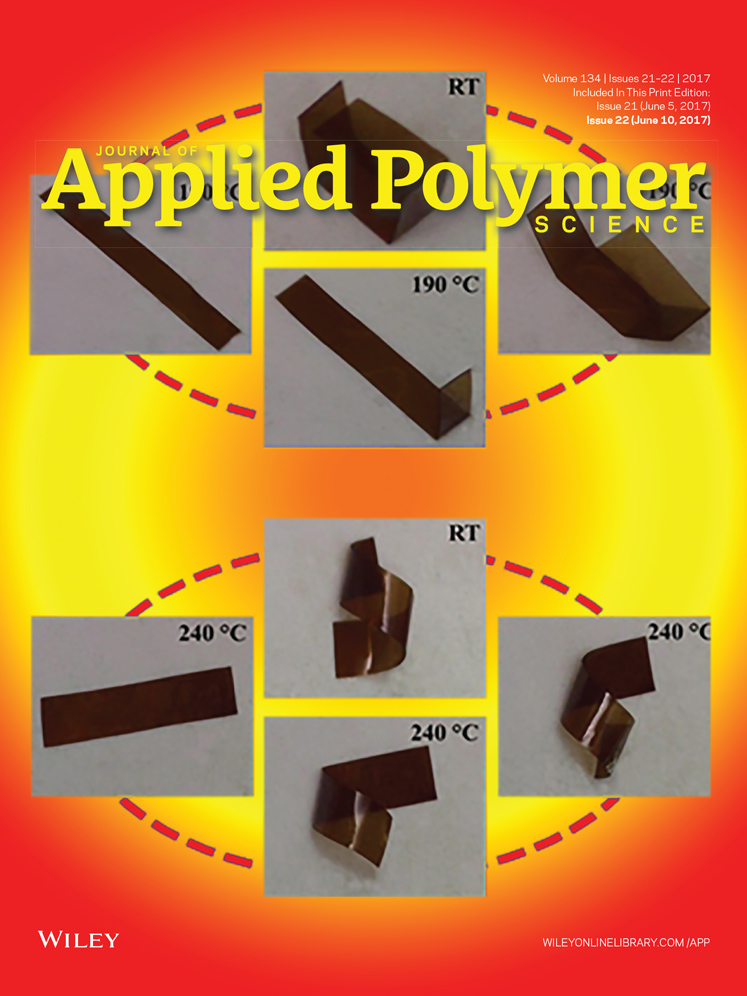Imidazolium-functionalized norbornene ionic liquid block copolymer and silica composite electrolyte membranes for lithium-ion batteries
ABSTRACT
Imidazolium-functionalized norbornene and benzene-functionalized norbornene were synthesized and copolymerized via ring-opening metathesis polymerization to afford a polymeric ionic liquid (PIL) block copolymers {5-norbornene-2-methyl benzoate-block-5-norbornene-2-carboxylate-1-hexyl-3-methyl imidazolium bis[(trifluoromethyl)sulfonyl]amide [P(NPh-b-NIm-TFSI)]} with good thermal stability. On this basis, the solid electrolyte, P(NPh-b-NIm-TFSI)–lithium bis(trifluoromethanesulfonyl)imide (LiTFSI), through blending with LiTFSI, and the nanosilica composite electrolyte, P(NPh-b-NIm-TFSI)–LiTFSI–SiO2, through blending with LiTFSI and nanosilica, were prepared. The effects of the PILs and silica compositions on the properties, morphology, and ionic conductivity were investigated. The ionic conductivity was enhanced by an order of magnitude compared to that of polyelectrolytes with lower PIL compositions. In addition, the ionic conductivity of the nanosilica composite polyelectrolyte was obviously improved compared with that of the P(NPh-b-NIm-TFSI)–LiTFSI polyelectrolyte and increased progressively up to a maximum with increasing silica content when SiO2 was 10 wt % or lower. The best conductivity of the P(NPh-b-NIm-TFSI)–20 wt % LiTFSI–10 wt % SiO2 composite electrolyte with 7.7 × 10−5 S/cm at 25 °C and 1.3 × 10−3 S/cm at 100 °C were obtained, respectively. All of the polyelectrolytes exhibited suitable electrochemical stability windows. © 2017 Wiley Periodicals, Inc. J. Appl. Polym. Sci. 2017, 134, 44884.




